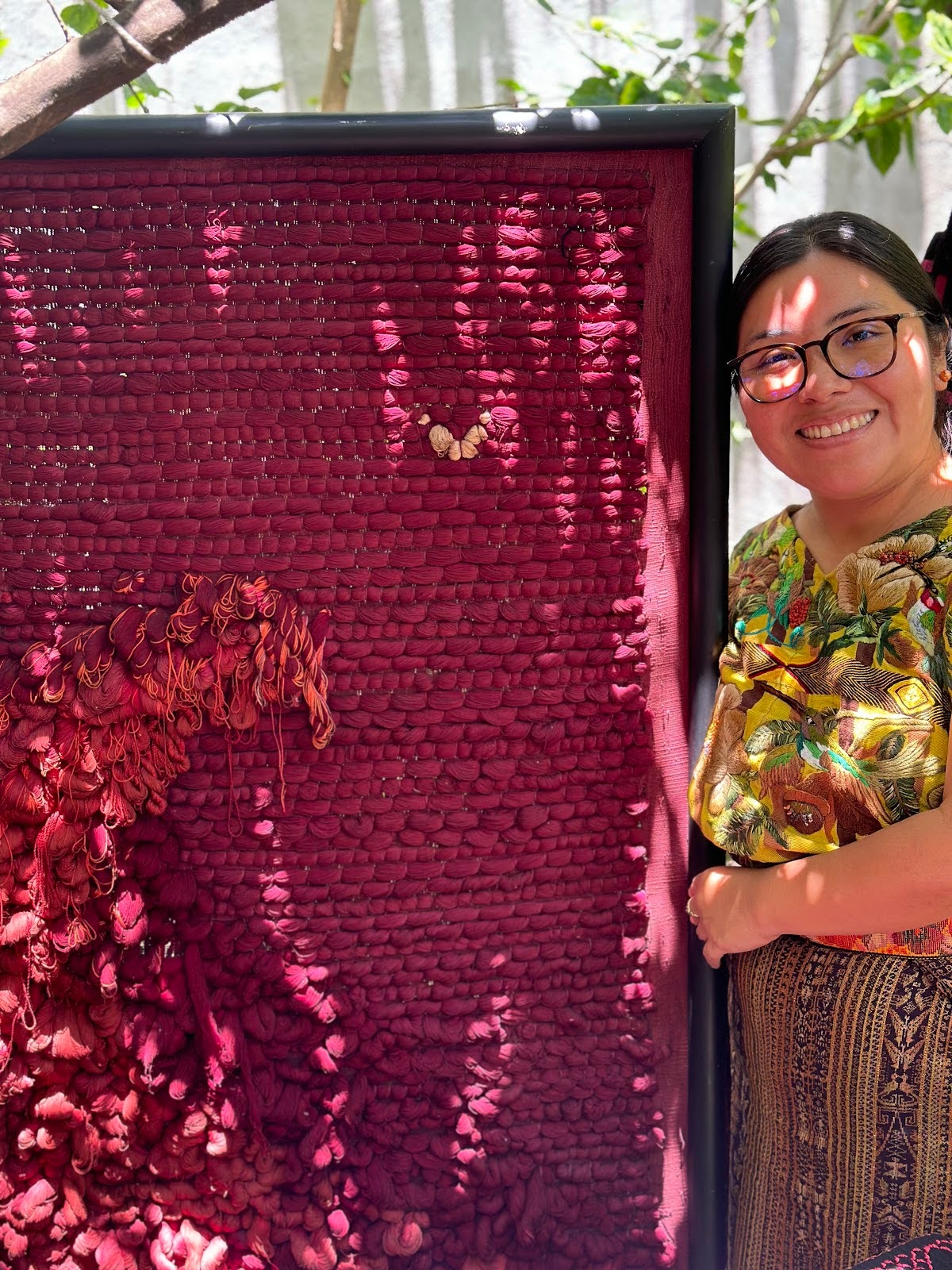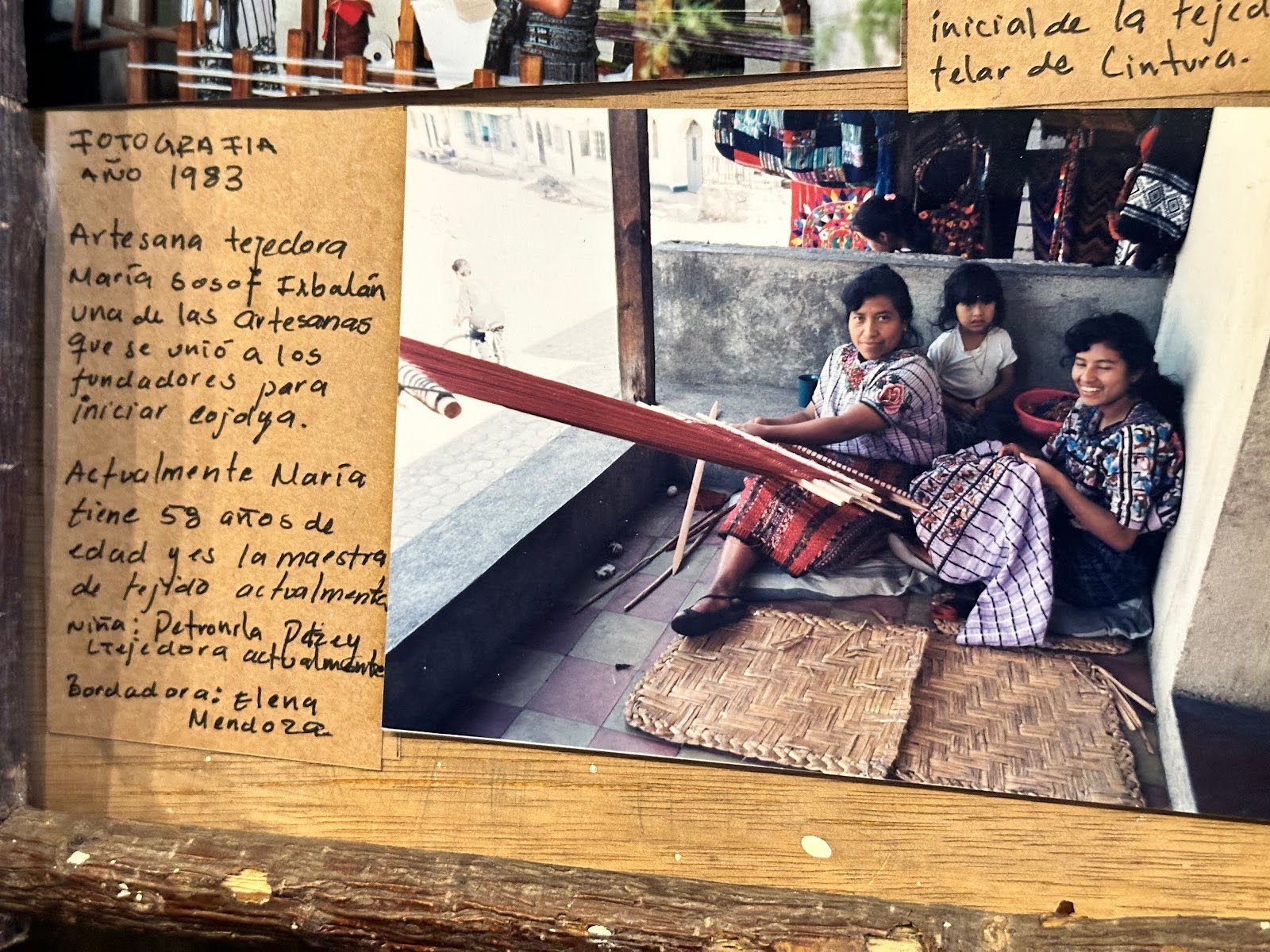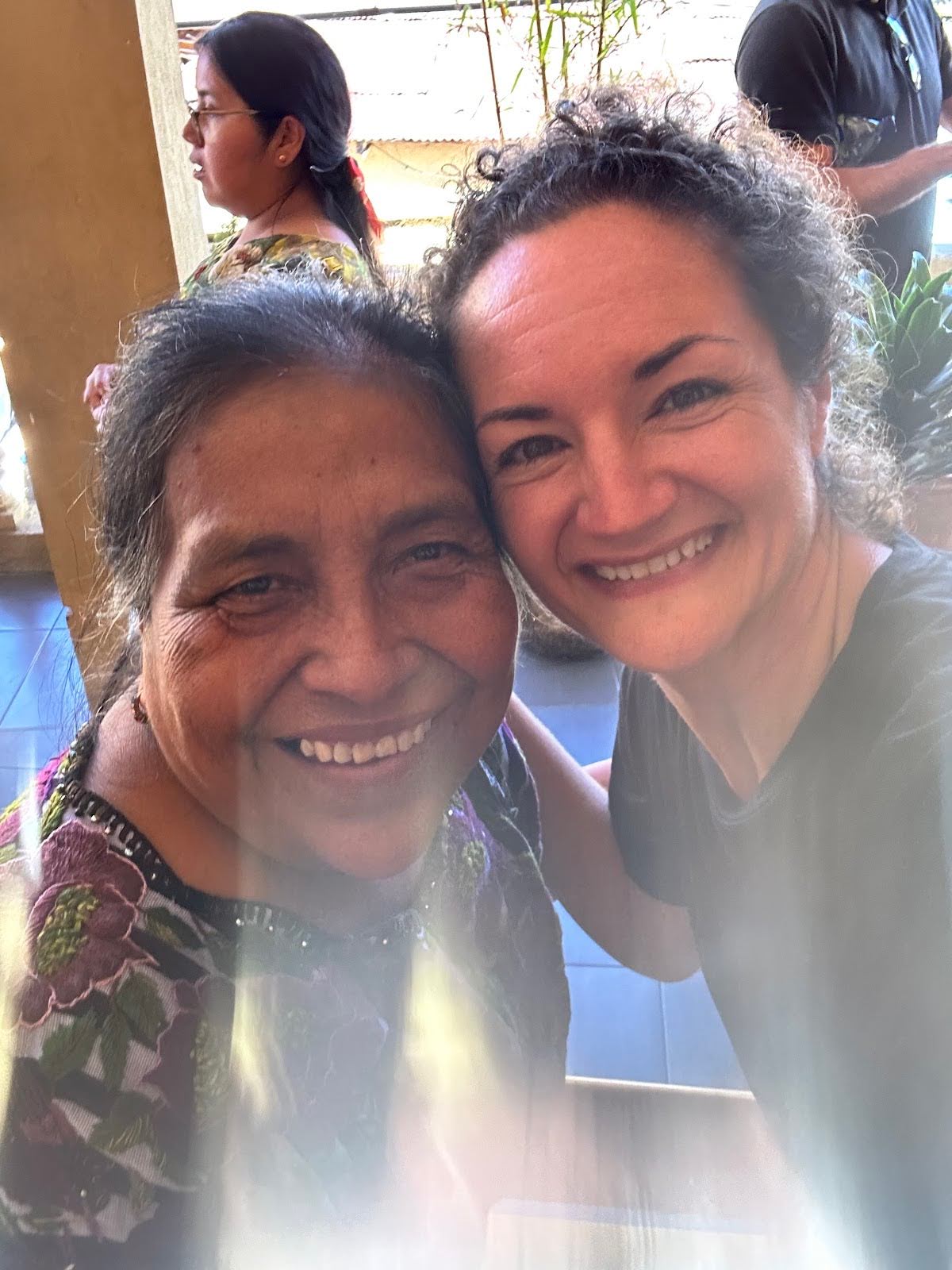A Reflection on Participating in the Pulsera Project: What we do (and don’t do) matters!
By Kimberly Tangaro, winner of the 2024 AATSP Exams’ Teacher Travel Abroad with The Pulsera Project Scholarship
In July 2024, a group of ten Spanish teachers (Lisa, Amanda, Amy, Chrissy, Christina, Lea, Danielle, Rose, Jen, and Kimberly) from across the United States embarked on an enriching journey to Guatemala, guided by five dedicated members (Evan, Sue, Jillian, Collin and Cathy) of the Pulsera Project. The trip focused on visiting Mayan artisans and delving into various cultural and societal topics. Through the lenses of humility, new understandings of poverty, solidarity, and self-awareness, all of us were participants who engaged in meaningful discussions, gained deeper insights into the complex issues faced by the local communities, and made lasting friendships through this special trip. This immersive experience fostered a profound appreciation for the rich cultural heritage and the resilient spirit of the Guatemalan people as well as kindled a common purpose to participate in the Pulsera Project.
Participants arrived in Guatemala City between July 9-11, some being delayed by the aftermath of Hurricane Beryl. A few participants made the rest of the group jealous with tales of delicious ice cream that they had eaten in the capital. All members were on the bus and ready to go on July 11, 9:00am! First stop- MUSEO IXCHEL! At Museo Ixchel, we learned about the rich history of weaving and the role of textiles in Mayan culture. This practice of weaving is a highly sustainable practice (women still make their own clothes as well as clothing for family members) and is a living reminder of what our microwave culture has lost. Women can spend at least one month making one “huipil” and that item is passed down to their daughters and granddaughters. After departing the museum, we stopped to eat lunch in Tecpán. The blue corn tortillas were delicious!!!! Before arriving in Panajachel for the night, we completed a walking tour of the Iximche ruins. Our guide was very knowledgeable about Mayan history and culture. One of my biggest takeaways from his tour was the importance of being patient when entering a new space in order to gain understanding. The name for the beautiful country we know as “Guatemala” is actually still a mispronunciation of this land’s correct name. The name “Tecpán Guatemala” is a Spanish mispronunciation of the correct name “Tecpán Cuautemallam.”
Other things I learned from this tour:
Importance of Living in a Partnership from a Mayan perspective: The triad of life consists of maize, beans, and squash, which are planted symbiotically, providing essential nutrients such as vitamin C, essential oils, protein, and iron. Traditional foods like deer (with permission sought 20 days in advance), turkey, fish, and rabbit require asking permission from the tree.
Mayan Calendar: One of the most accurate in the world, the Mayan calendar is based on the human body, which has 20 fingers and toes. The dots represent fingertips, and a line represents the arm. The months are based on the 13 joints, resulting in a 260-day cycle (20 x13). Energy flows through the body in pyramid shapes, with seven as the largest step and that is how Mayan ruins are constructed.
Four Colors of Maize: The four colors of maize—black, red, white, and yellow—correspond to the colors found in the human body: black (hair), red (blood), white (bones), and yellow (fat). These colors also represent the diversity of human skin tones: African, European, Asian, and Indigenous.
That night, I could barely sleep as my mind was racing with so many new thoughts and perspectives gained.
The next day, Friday July 12, after our morning discussions, we boarded a boat on the shore of Lake Atitlan for our first visits! This was one of the most memorable and meaningful days for me because we went to El Instituto Mesoamericano de Permacultura (IMAP) and the school Centro Educativo Comunal Mixto Santa Cruz (CEMSEC). One of my goals in applying for this learning opportunity with the Pulsera Project and AATSP was to make friends with a school in Guatemala so that my Hawaii school can begin to cultivate a friendship and gain a Spanish-speaking sister-school. To begin this friendship, the four teachers (Kehau, Mylena, Xiomara and myself) at Mililani High School had our students write children’s books with pages about the student author so that I could give away these books as the seed of friendship. Not only were the books well received by the students of CEMSEC, I also made friends with Saqueo, a beloved teacher of Mayan studies at CEMSEC and Andres, who is both an alumni of CEMSEC and the current agricultural liaison between the school and IMAP. At IMAP, Andres is in charge of amaranth cultivation and production. While at IMAP, we participants toured the farm and met students who are studying agriculture while on scholarship from the Pulsera Project. These students expressed their gratitude for the opportunity to make pulseras in order to pay for their schooling. One young lady expressed her sincerity by sharing how this connection saved her life after experiencing trauma. She had a new sense of purpose making pulseras and found healing in caring for the land.
The next day, we departed by boat to visit Alma de Colores located in San Juan La Laguna on the shores of the beautiful Lake Atitlan. The Mayan language spoken here is Tzutujil. Alma de Colores is an inclusive business of artisans with disabilities. These professionals are tenacious, creative and resilient individuals who make pulseras and textiles with much love and passion. Creating quality products is a core value. They have also expanded into a restaurant and bakery with the goal of one day owning their own land and buildings. Although this group is extremely entrepreneurial and independent, they made it clear that the work and support received from the Pulsera Project sales allows them to thrive during the Guatemalan rainy season. For lunch, they served us a delicious chicken pepián. During lunch, the ladies led by Soña gave each one of us our name using sign language. A few of us teachers are going to take this idea back to our classrooms! While teaching the ABCs and Spanish-language pronunciation, we are going to incorporate the use of sign language and have our students name each other.It was a very bonding and joyful activity. After lunch, the artisans accompanied teachers as we explored the lake town. Some of us hiked the mirador called el rostro maya. Others visited a coffee farm and bee apiary. The honey wine was DELICIOUS!!! This evening a few of us teachers made time for an evening swim in Lake Atitlan. So refreshing!
The days were so full of purpose and newly gained perspectives that we couldn’t believe it was already our last day on the lake. We visited the Cojolya artisan co-op and watched a weaving demonstration. After lunch we strolled through the brightly colored Santiago market and visited artisans in their homes. These women wanted to show off their home improvements that had been funded by proceeds from the Pulsera Project sales. It was humbling and beautiful to see the real world impact that our classrooms were making in the lives of these women artisans and their families.
On Monday, July 15, we had to say farewell to Lake Atitlan as we made our way to the UNSECO World Heritage city of Antigua. During this transition day, we stopped at Asomujerdi and El Parque Ecologico Chuiraxamolo. Asomujerdi is led by Ita and stands for la Asociación Sololateca de Mujeres para el Desarrollo Integral. These women own a radio station and have created a program of various topics that run every day from 3:00p.m. to 10:00p.m. The purpose of Asomujerdi is to help improve the lives of women and children and foster a holistic development in their community. The Pulsera Project recently funded a new antenna for them which extends their reach and makes the connection stronger and more stable. Another activity that a few of us teachers are taking back to our classrooms is their style of playing the game “red light, green light.” One line is formed and the players must listen to the color that is said. If the teacher calls out “Rojo” (red) the line is supposed to move in unison to the right, “Amarillo” (yellow) left, etc, for backwards or forwards. The players who break the unison are out. We teachers can use this in the classroom as a brain break and to reinforce vocabulary using color words and location words. The artisans such as Ilda who wore a beautiful hat, Brenda who loves MMA and wears her hair in trenzas, Jessica whose hair is dyed purple as a statement of her femininity and her cousin Ana who loves basketball, Korean BTS and Korean dramas, are living examples of individuals who are breaking systemic cycles of oppression and maltreatment in their society while preserving beautiful cultural practices.
The last day of this transformative trip was dedicated to reflection as well as a little bit of fun! In the morning, we reviewed the impact of participating in the Pulsera Project and how many lives are benefited through this organization and their dedication to free trade. We brainstormed how to improve our pulsera sales at our schools and ways that we can let other educators know about this amazing opportunity to participate in service learning that lends itself to conversation and discussions about sustainable practices, free and fair trade and poverty. After this reflective time, we said our goodbyes and chose different activities. Some went shopping and walking in Antigua. Others visited Hobbitenango.
The Pulsera Project is a window to look at the world through. People oftentimes have to experience things before they see them or receive them. Thank you from the bottom of my heart for including me and providing me with this opportunity to see the work in action. And I hope that this is just the beginning of a rich, meaningful and prosperous relationship between Mililani High School, the Pulsera Project, and the many artisans and organizations of Guatemala like CEMSEC and IMAP!



































































